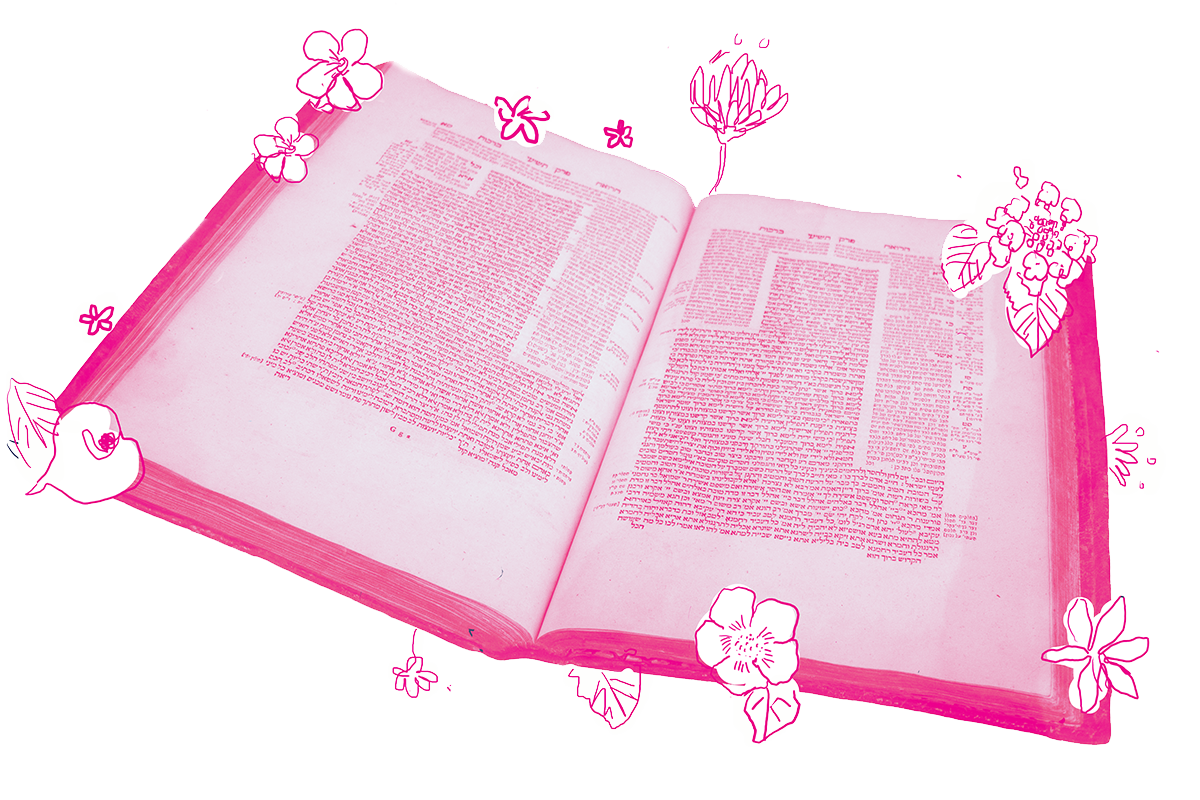If a man declines to perform yibbum and marry his childless brother’s widow, he can be relieved of his responsibilities through the ritual of halitzah. The process is described in Deuteronomy 25:7-10:
The widow goes to the elders at the gates of the city and declares, “My husband’s brother refuses to establish a name in Israel for his brother; he will not perform the duty of a yavam.”
The brother-in-law is summoned and if he refuses to marry her, the widow pulls off his sandal, spits in his face, and proclaims, “Thus shall be done to the man who will not build up his brother’s house!”
This procedure releases the brother from his obligation, but from then on, he and his household are referred to as “the family of the unsandaled one.”

Help us keep Jewish knowledge accessible to millions of people around the world.
Your donation to My Jewish Learning fuels endless journeys of Jewish discovery. With your help, My Jewish Learning can continue to provide nonstop opportunities for learning, connection and growth.
On today’s daf, the rabbis, in their uniquely talmudic way, begin to elaborate on the requirements of the halitzah ceremony. For example, the Torah stipulates that the widow must go before elders, but doesn’t tell us how many. We learn today from a beraita (early teaching) that there is a dispute on the matter:
The mitzvah of halitzah is performed before three individuals who know how to dictate the verses like judges. Rabbi Yehuda says: Before five.
The mishnah settles this debate, going with the majority opinion — three elders are required. And the Gemara tells us that Rabbi Yehuda, in fact, later retracted his opinion, which makes the following incident a bit surprising:
Rav Pappa and Rav Huna, son of Rav Yehoshua, conducted a case of halitzah before five judges.
Why would Rav Pappa and Rav Huna gather five judges if only three are required? And, given that Rabbi Yehuda no longer holds that five are required, on whose authority are they doing so?
The Gemara resolves the matter relatively easily:
They did this only to publicize the matter and not because this number of judges is required.
Rav Pappa and Rav Huna gathered five judges not because they were required to, but because they wanted to publicize the fact of the halitzah. But what does it mean to publicize the matter? And why would they want to do this?
Rashi suggests two possibilities. Perhaps they want everyone to be aware of the halitzah so that people will know that the woman is no longer fit to marry a priest. (As we’ve learned, halitzah is similar to divorce and a priest cannot marry a divorcee.) Or maybe the goal is to let potential suitors know that the levirate bond between the widow and her brother-in-law has been dissolved and the woman is now free to marry others.
Both of Rashi’s suggestions are plausible. Surely by increasing the number of elders present, Rav Pappa and Rav Huna have increased the odds that the community would be aware of the widow’s post-halitzah status. However, there is another possibility, which is hinted at in the biblical text.
The Torah clearly prioritizes yibbum over halitzah. The halitzah ceremony itself is evidence of this, as it is designed to publicly shame the reluctant yavam. His shoe is ripped off, he is spit upon, and he is forever labeled “the unsandaled one.” So perhaps Rav Pappa and Rav Huna desired to increase the spectacle of the event to increase the pressure on the brother to rethink his decision not to enter into a levirate marriage and to magnify the stigma if he does not do so.
The Gemara goes on to describe a number of occasions when rabbis brought more than the minimum number of elders to witness halitzah, suggesting that perhaps this is the desired (if not technically required) practice. Whether their goal was to publicize the widow’s new status or to pressure the brother to change his mind, increasing the number of dignitaries who were invited was one way to tap into the social media of their day — word of mouth — and get the news out.
Read all of Yevamot 101 on Sefaria.
This piece originally appeared in a My Jewish Learning Daf Yomi email newsletter sent on June 16th, 2022. If you are interested in receiving the newsletter, sign up here.



